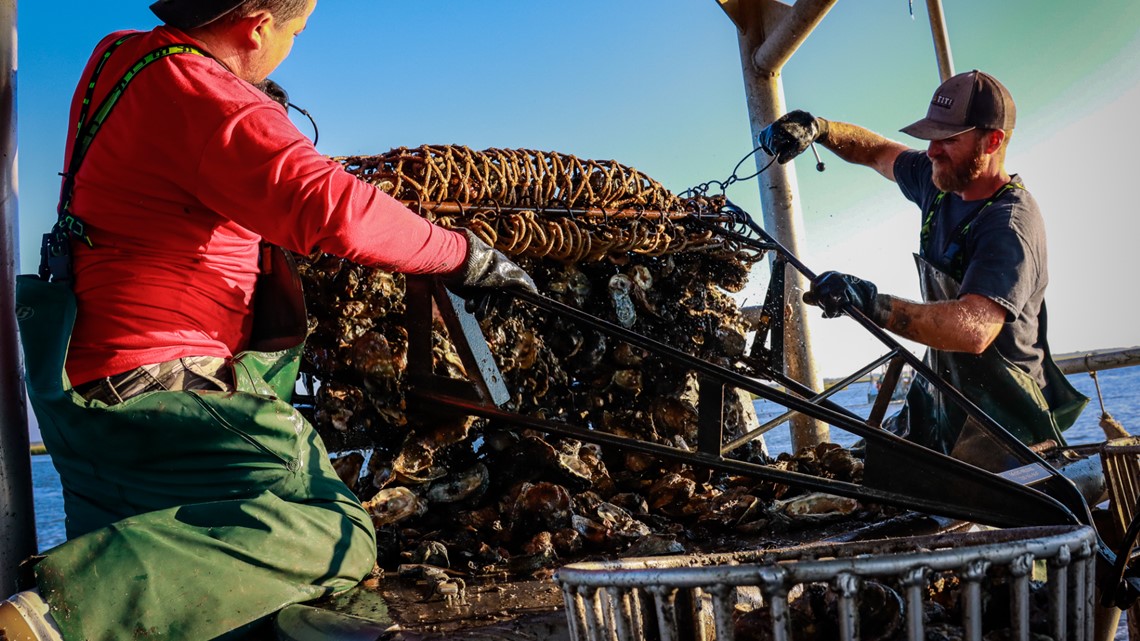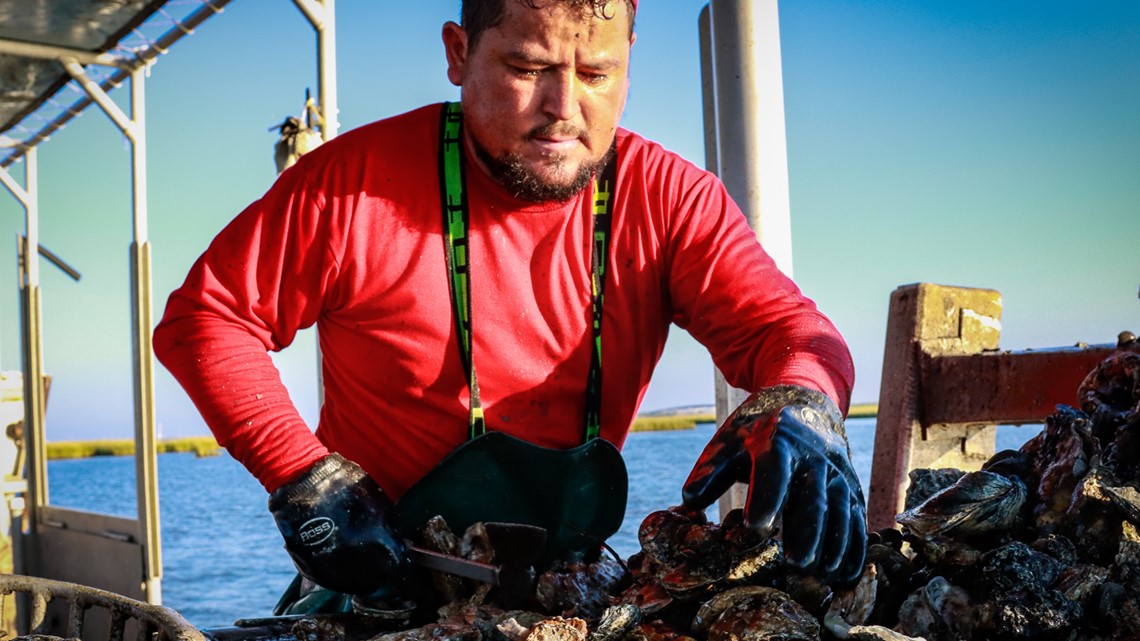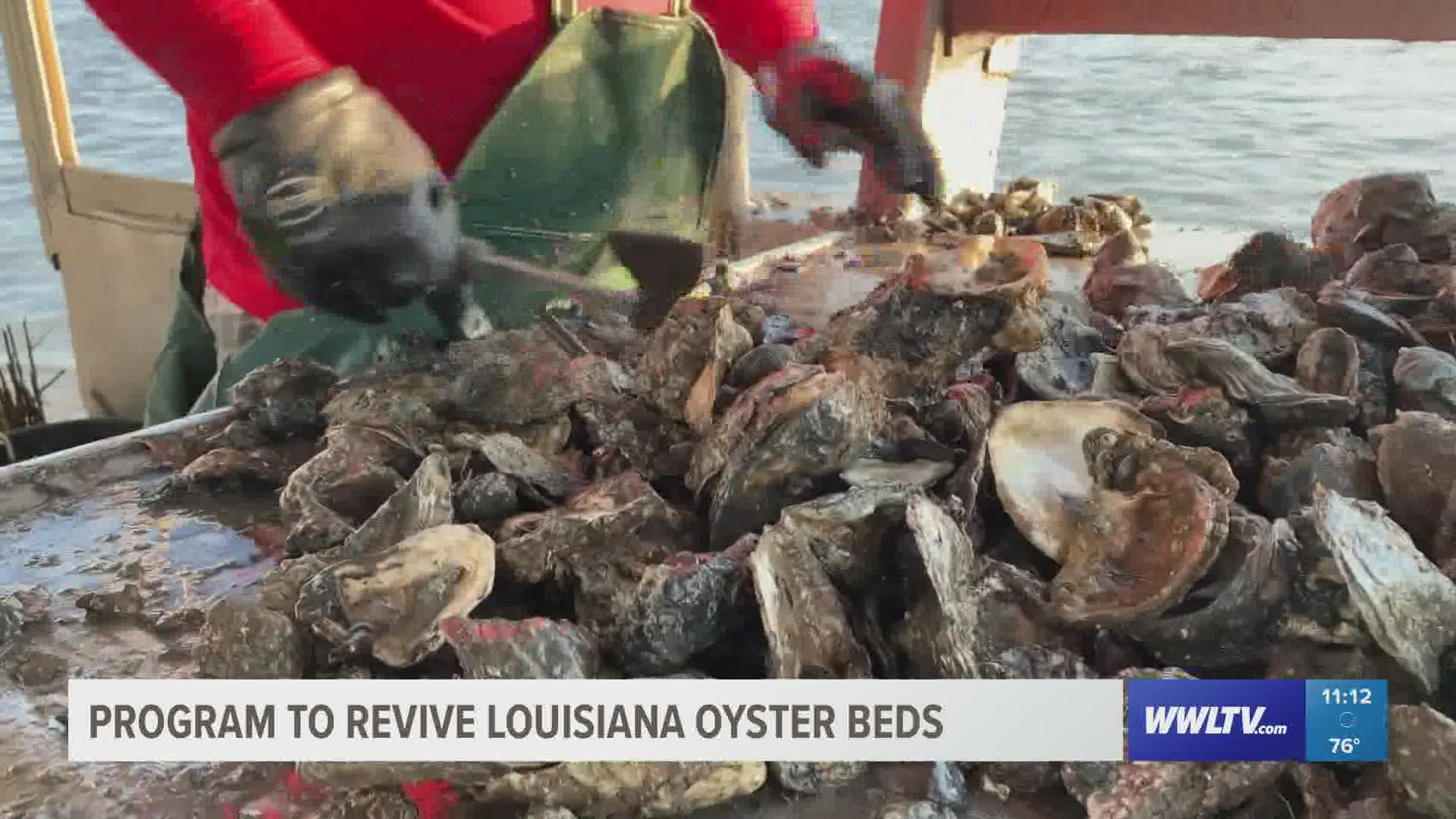PLAQUEMINES PARISH, La. — At the crack of dawn, Louisiana’s oyster fishermen are on the water collecting their harvest.
Hurricane Ida largely spared Plaquemines Parish, but under the water, the storm dealt another blow to the oyster industry.
Sediment and debris pushed in by Hurricane Ida smothered several oyster beds, killing Louisiana’s signature seafood.
“An estimate right now, we’re looking at about a 40% loss in standing crop,” Mitch Jurisich said. “But when you get further west – Lafourche, Jefferson, Terrebonne Parish – they really took the brunt of it and I’m sure what they’re finding that way is a lot of devastation.”
Jurisich is a third-generation oyster fisher and a member of Louisiana’s Oyster Taskforce. He says the once dominant Louisiana oyster industry is barely hanging on as the country’s top producer. Hurricane Ida is just the most recent blow to an industry still recovering from the BP Oil Spill in 2010 and the Bonnet Carre Spillway opening in 2019.
“We’re hanging on by a thread now due to all these disasters we’ve been getting,” Jurisich said. “It’s been set back after set back.”
It typically takes three years for an oyster to reach maturity, but it could take years for them to return in harder hit parishes. Jurisich estimates that some areas may take five to eight years after Hurricane ida.
And that timeline doesn’t start until the oyster beds are rehabilitated.


Fishermen will have to clear the sediment from the beds and lay culch, the stones or broken shells where oyster beds can form. It’s a time consuming and expensive process that many fishermen can’t afford on their own.
That’s where the POLR program comes in. POLR, or Private Oyster Lease Rehabilitation, was created after Hurricane Katrina. It pays fishermen for their time so they can do that rehabilitation work and reimburses them for the cost of supplies.
There’s a meeting in Baton Rouge on Wednesday, Oct. 13, between the Oyster Task Force and Louisiana’s Department of Wildlife and Fisheries to discuss bringing the program back 16 years later.
Jurisich thinks there’s a good chance the program returns, but he’s worried about how long it could take to get going.
“It’s time like these where fishermen can’t wait,” he said. “We need to get these reefs cleaned off. We need to get some fresh culch material in the water. We’ve got to rehabilitate now to have any hope for three years down the line.”
Fresh Louisiana oysters are still coming out of the water, but there’s bound to be a scarcity. Restaurants will likely have to turn to Texas, Maryland and other oyster producing states.
“There’s no better oysters than Louisiana oysters,” Jurisich said. “They’ll become scarce, especially as the harvest continues on.”


There is a silver lining to the storm for Louisiana’s oyster farmers. Since the 2010 BP Oil Spill, oyster have had a harder time spawning and surviving, according to Jurisich. But whenever there’s a tropical event, it’s followed by a resurgence in the oyster crop.
“Mother nature, she may hit us hard, but she always gives back,” he said.
It’s that relationship with nature that makes Louisiana oyster and their fishermen so resilient, Jurisich said.
“As long as we’ve got one oyster alive, we’ve got hope.”

